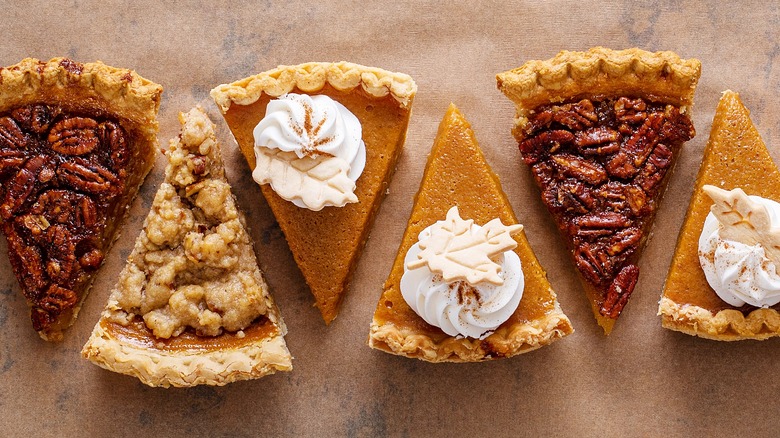Do Self-Crusting Pie Recipes Actually Work?
Pie is the way to many hearts. Whether you favor the crust or the filling, it's highly enjoyable and has enough flavors to be seasonal year-round. From the classic pies served around Thanksgiving and Christmas like pumpkin, sweet potato, pecan, and apple, and tart summer favorites like rhubarb, strawberry, blueberry, and key lime, to more unique pie flavors with a delicious twist such as coconut custard, chocolate chess, and peanut butter pie, the options are endless, allowing you to make this decadent dessert your very own.
While most pies use either a pre-made crust that simply needs a good defrosting before rolling out, or a from-scratch dough requiring a bit of kneading and chilling before rolling out and baking, there is a new phenomenon in the baking world called self-crusting pies. Erin Phraner, a New York-based producer and food-lover, sparked the internet when she first introduced the trick of self-crusting in an Instagram post using her recipe for both the batter and blueberry pie filling. Instead of going through the various steps of working a pie dough, Phraner whips up a batter in her mixing bowl, pours it into her pie pan, and pours her hot, bubbling blueberry filling in the center of the batter. From there, it enters the oven and turns into a magical pie with the crust baked around the edges. Is this magical method fool-proof?
Technically yes, but it looks and tastes different
According to Food Network, this technique takes the time and stress away from rolling, chilling, and pre-baking, as it is essentially a batter that bakes up around the filling into a golden brown crust. However, the taste and texture is quite different from a traditional pie crust. When Justin Burke from The Kitchn embarked upon this journey to try the self-crusting pie method using Phraner's recipe, he concluded that while it was delicious, it resembled a cobbler over a pie. The flavor is also a bit different. Instead of a flaky, buttery crust that you get from traditional pie dough, the batter bakes up into a shortbread dough.
Because the filling weighs the batter down, pushing it better towards the edges and over the filling to form a crust, similar to how a Dutch baby cooks up in the oven, this is considered more of an inverted sonker, which is a type of cobbler created in Surry County, North Carolina.
In conclusion, if you often prefer a tender cake consistency over a flaky crust, this version of a pie is just for you. If you enjoy the convenience of it, Wide Open Eats has a variety of different impossible pies that only require a batter, which separates in the oven into a filling and pie crust.

